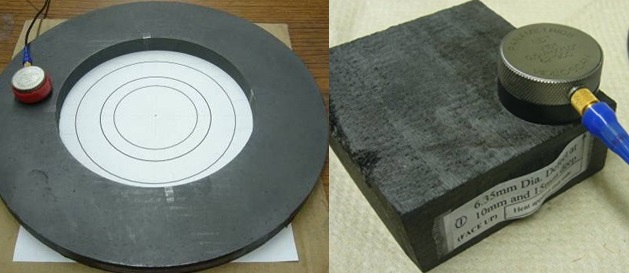Contact Ultrasonic Testing
Main Content

This ultrasonic testing approach employs contact transducers in direct contact with the test piece. Usually, a thin film of oil, glycerin, or water is applied between the transducer and the test surface. The couplant displaces the air and makes it possible to get more sound energy into the test specimen so that a usable ultrasonic signal can be obtained. The transducers introduce sound energy to the surface and are typically used for locating voids, porosity, and cracks or delaminations, as well as for measuring thickness. The experimental methods include shear wave, pulse-echo, and through transmission methods.
Capability:
- Operation range: 40 KHz ~ 40 MHz
- Karl Deutsch Echograph 1030 flaw detector system
- Two 500 KHz Olympus V101 - RM VIDEOSCAN contact transducers
- Data collected through Agilent Technologies Oscilloscope (54642A)
- Shear wave, pulse-echo, and through transmission accurate A-scans
- Thickness measurements
Application:
- Raw materials, casting, and forgings
- Metals, composites, ceramics, and polymers
- Carbon/Carbon composites
- Carbon/Epoxy composites
- Graphite-epoxy sandwich panels
- Automotive clutch facings
- Automotive brake pads
- Asphalt concrete
- Weldments, adhesive bonds, and pipes



